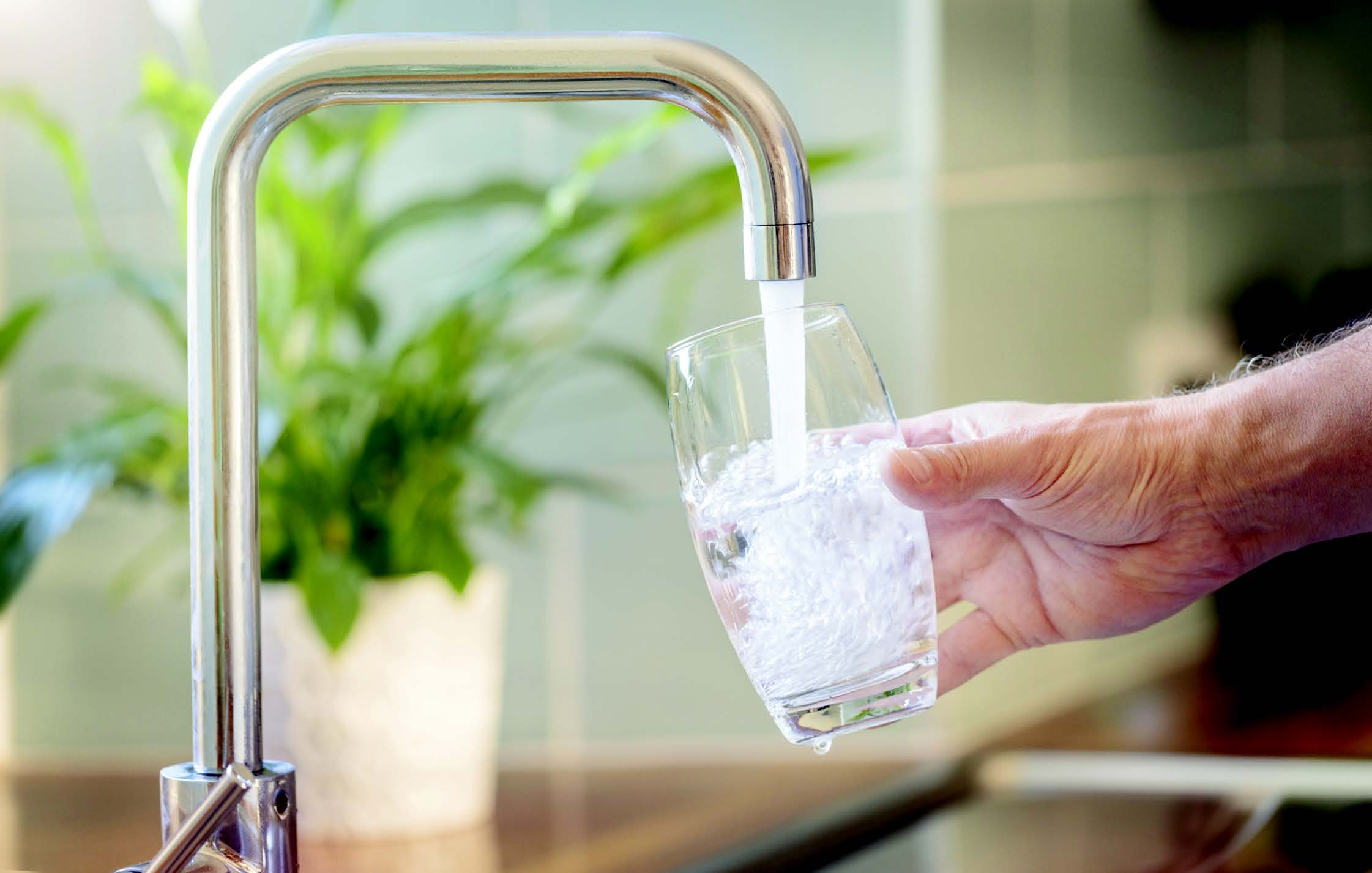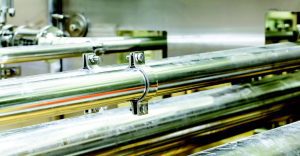
A recent press release – NSF named certified body by UBA, strengthening its position in European water product certification – sparked SSW’s interest into materials selection for drinking water systems. Desk research shows that whilst traditional solutions – copper, cementitious, composites, etc – may hold sway in some areas, corrosion resistant alloys have certainly proven their worth in the world of plumbing.
By KCI Editorial
The communication from NSF announced that its European Headquarters in Brussels has been accredited by the German Federal Environment Agency (Umweltbundesamt or UBA) as a certified body for products that come into contact with drinking water. Effectively, NSF can now provide comprehensive certification services for relevant materials and products. This expansion of capabilities follows NSF’s recent opening of laboratories in Rheda-Wiedenbrück, Germany, and the addition of ASME and NSF/ANSI/CAN 60 and 61 standards testing in Europe. David Platt, Director of Water EMEA at NSF, comments: “this milestone demonstrates our commitment to providing manufacturers with strategic advantages in the evolving European regulatory landscape and streamlining global market access.”
The accreditation comes at a critical juncture as the industry prepares to implement the European Drinking Water Directive (DWD), set to take effect on January 1st, 2027. The DWD aims to ensure high-quality, safe drinking water for 448 million people across the EU, covering all water intended for human consumption.
About the Drinking Water Directive

Directive (EU) 2020/2184 of the European Parliament refers to the quality of water intended for human consumption. The preamble states:
“Directive 98/83/EC set the legal framework to protect human health from the adverse effects of any contamination of water intended for human consumption by ensuring that it is wholesome and clean. This Directive should pursue the same objective and should improve access to such water for all in the Union. To that end, it is necessary to lay down at Union level the minimum requirements with which water intended for that purpose should comply. Member States should take the necessary measures to ensure that water intended for human consumption is free from any micro-organisms and parasites and from any substances which, in numbers or concentrations, in certain cases, constitute a potential danger to human health, and that it meets those minimum requirements.”
As such the DWD sets EU-wide requirements for materials which come into contact with drinking water. Hygiene requirements are described in Article 11 of the DWD. Together with Article 11, the so-called Positive List should ensure drinking water safety. The Positive List indicates which substances are approved for use in items such as pipes and fittings.
Positive List
Looking for more information about approved materials, SSW found an online European Union page which discussed Document 32024D0367.
The introduction reads: “Commission Implementing Decision (EU) 2024/367 of 23 January 2024 laying down rules for the application of Directive (EU) 2020/2184 of the European Parliament and of the Council by establishing the European positive lists of starting substances, compositions and constituents authorised for use in the manufacture of materials or products that come into contact with water intended for human consumption.” Within this document, tables and annexes cover groups of materials such as organic materials, metallic materials, cementitious materials, as well as enamels, ceramics and other inorganic materials. Stainless steels can be found under EUPL number 1679, within the metallic composition category of Steel/Iron. Specifically: “stainless steels according to EN 10088 and EN 10283.”
Resources
The NSF has prepared a ‘watch on demand’ video that explores the new Drinking Water Directive, setting out its implications and impact on businesses and consumers in Europe. To view: (tinylink opens a page on the NSF website) https://tinyurl.com/2xzuzkw5
IMOA – the International Molybdenum Association – also has a number of relevant documents. To access: (tinylink opens a page on the IMOA website) https://tinyurl.com/5brpmwyf
EDW initiative
That the supply chain has long anticipated the Drinking Water Directive is evidenced by European Drinking Water (EDW), an alliance of trade associations representing industries supplying products or materials used in drinking water applications and municipal drinking water supply in Europe. Their website states that “with the broad knowledge of its members, covering both the individual elements of the supply chain and the wide range of drinking water applications, that initiative has established itself as the voice of the industry and is now a recognised partner for legislators, regulators, and other stakeholders.” EDW also points out concerns.
For example, it seems that there are currently over fifteen different certification and testing organizations within the European Union that regulate the approval of products and materials that are suitable for use with drinking water. They state: “as a result, there is currently no common EU standard for the protection of human health….
Compliance with all test criteria in the respective member states is an extremely complex and time-consuming process for product manufacturers and is often associated with unnecessary financial burdens.”
Interesting detail: EDW comprises over thirty member associations, including Nickel Institute (see Box: The advantages of stainless).
Stainless steel applications
Multiple uses and applications of corrosion resistant alloys in potable water systems can of course be found online.

Drinking water storage: located in Ulm, Germany, a substantial drinking water storage facility began operations in late 20231. The facility comprises three 4,000 m³ tanks. Lean duplex (1.4162) was used for the tank bottoms (3 mm) and the lower 6.4 metres of the shell (4 mm). Super duplex (1.4462) was selected for the upper section of the shell plus the roof. 316L was the material of choice for the central columns (essential to support the flat roof). Over fifty tonnes of alloys were required for each tank.
Water reservoirs: can include underground reservoirs or water towers2. With aging, such structures – typically made of concrete – can require costing repairs. Damage to surface coatings can also cause hygiene problems. Welded stainless steel liners provide a long-term solution, indicates worldstainless.
Water supply: the BSSA has a very helpful page with information about the selection of stainless steels in water supply and waste water treatment3. They state: “types 304 and 316 stainless steels are normally successfully used in the range of water compositions encountered during water and waste water treatment. They do not experience general thinning and therefore do not require a corrosion allowance. This allows thin and light weight sections to be made that are readily transportable, and have a low maintenance requirement throughout a long service life. They can withstand flow rates in excess of 30m/s and behave well under turbulent conditions. Aeration processes do not lead to higher corrosion rates, as might occur with carbon steels. Stainless steels do not need chemical additives to the water to maintain corrosion resistance. Metal leaching rates are minimal.”
Water treatment: the advantages of stainless-steel hollow sections in the load-bearing structures in water treatment facilities are clear4, according to Stalatube, who list benefits such as high corrosion resistance, recyclable, long lifecycle, maintenance-free, hygienic surface, etc. “Stainless steel grades such as EN 1.4162 (LDX 2101) are excellent performers for when high strength, durability, good corrosion resistance and low maintenance needs are needed. Using stainless steel in load-bearing structures is also ecologically sustainable as the material has a long operational lifetime and is fully recyclable.”
Service pipes: the story of how the Tokyo Water Board slashed leakage rates and as a result also reduced its maintenance budget has been widely reported. The foundations for success were, of course, laid when the Board chose stainless steel 316 for service pipes over other options, including carbon steel. Apparently, the Board found stainless steel to be the most cost-effective option over 100 years, despite a higher initial investment cost. Outokumpu’s website narrative is highly readable and moreover accompanied by a very compelling chart showing the dramatic decline in leakage rates5.
Technical articles
Research is ongoing to further improve the performance of stainless steels in drinking water applications. For example, the March–April 2025 Journal of Materials Research and Technology reports efforts to enhance the reliability and service life of 310S stainless steel heating tubes used in electric water heaters6. This involved adding molybdenum and optimizing other components. Electrochemical tests and surface analysis techniques indicate that the pitting corrosion resistance of the modified stainless steel was superior to that of 310S and 840 stainless steels “which is primarily attributed to the molybdenum element forming MoO, MoO2, MoO3, and promoting the formation of Cr2O3, thereby enhancing the passive film quality.”
A number of resources issue words of caution when combining stainless steels with pipes made of other metals in plumbing systems. This is because directly coupling dissimilar metals can lead to galvanic corrosion. Precautions include the use of connecting elements to prevent direct metal-to-metal contact. Hence a 2020 study in the Journal of Hazardous Materials discusses lead release in drinking water resulting from galvanic corrosion in three-metal systems consisting of lead, copper and stainless steel7. Amongst others, the research highlighted that the presence of a third metal can influence the magnitude of galvanic currents and that lead release was the highest when materials were in order of reduction potential.
The advantages of stainless
Nickel Institute has a very informative webpage about water system applications8. They state that:
“nickel-containing stainless steel offers low maintenance, simple fabrication and provides resistance to water and the chemicals used to make it safe. Stainless steel offers sound economic benefits that are not restricted to maintenance costs. Cement mortar-lined steel and ductile iron piping is limited to water velocities below three metres per second, as is copper. Stainless steel, however, can withstand water velocities of up to 40 metres per second. This vastly improves efficiency in both the treatment and delivery of water. In a typical water treatment and delivery system, Type 304 will be used, Type 316 in higher chloride environments. These austenitic grades provide a proven track record of reliability and ease of fabrication. The duplex stainless grade 2205 can provide a tensile strength nearly twice that of carbon steel. Duplex stainless steels allow the water industry to use thinner sections, thus reducing both weight and cost and are increasingly popular.”
Their conclusion is compelling: “nickel-containing stainless steels are used throughout the water cycle, from water harvesting to wastewater disposal. They offer the ideal combination of high strength and low maintenance, with a lifespan greater than 100 years, more than compensating for any higher initial investment.”
Footnotes
1. https://stainless-steel-world.net/europes-largest-stainless-water-reservoir/
4. https://stalatube.com/industries/process-industries/water-treatment/
5. https://www.outokumpu.com/en/expertise/2021/the-secret-to-tokyos-low-water-leakage-rate
6. https://www.sciencedirect.com/science/article/pii/S2238785425004260
7. https://www.sciencedirect.com/science/article/abs/pii/S0304389420309250
8. https://nickelinstitute.org/en/nickel-applications/water/
About this Tech Article
Appearing in the May 2025 issue of Stainless Steel World Magazine, this technical article is just one of many insightful articles we publish. Subscribe today to receive 10 issues a year, available monthly in print and digital formats. – SUBSCRIPTIONS TO OUR DIGITAL VERSION ARE NOW FREE.
Every week we share a new technical articles with our Stainless Steel community. Join us and let’s share your technical articles on Stainless Steel World online and in print.

